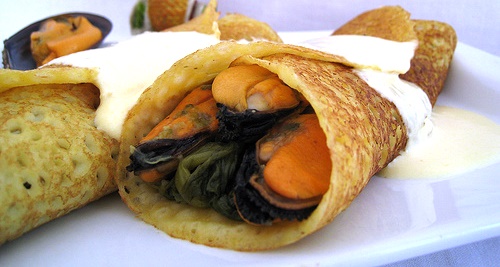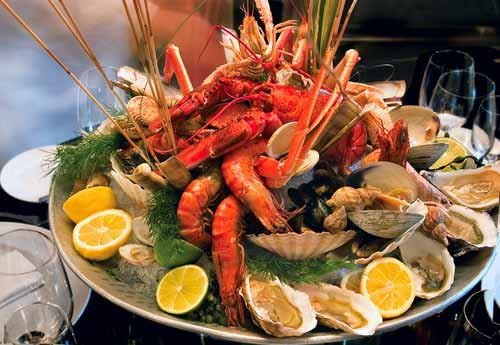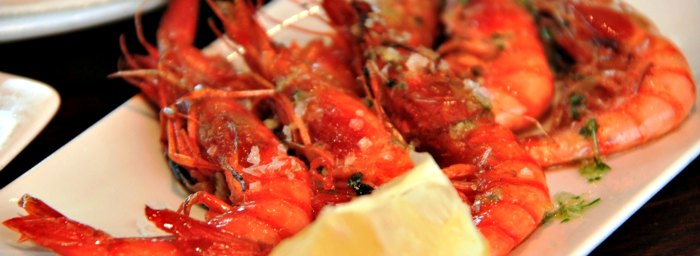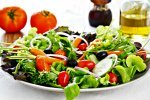Mussel Pancakes
Galician mussels are the best in the world and this simple recipe shows them off perfectly. The thin crêpes are related to the ones made in Brittany, which shares the same Celtic culture. Sweet ones are made with milk and filled with custard for dessert.
- Serves 6 as a starter or 4 as a supper
- Difficulty: easy
Ingredients
- 4 lb mussels
- 4 fl. oz dry white wine
- 2 tablespoon chopped onion
- 4 parsley stalks, bruised
- 6 black peppercorns, crushed
For the crêpes
- 3 1/2 oz flour
- 2 large eggs
- mussel liquid (see preparation)
- 4-6 tablespoon thick cream
- 4 tablespoon butter
- 6 tablespoon chopped fresh parsley
Preparation
Wash the mussels, discarding any that are open (and do not close when touched). Pull off the beards. Put the wine, onion, parsley stalks and peppercorns in a big pan and bring to a simmer. Put in the mussels (in 2 batches) and cover tightly. Cook over a high heat for 3-4 minutes shaking occasionally, until they are open.
Discard the shells and any that remain shut or smell strongly. Strain the liquid into a measuring jug and leave to cool. Taste for seasoning.
Make the crêpe batter. Put the flour in a bowl or blender and work in the eggs, mussel liquid an 2 tablespoons of cream. (Don't overbeat in the blender). Let it stand, if you can, for a good hour.
Melt 1 1/2 tablespoons of butter in a frying pan, swirling it round. Add to the batter and stri thoroughly. Heat another 1/2 tablespoon of butter and swirl. Use about 1/3 of a cup of batter per crêpe: it is easier to pour from a cup.
Lift the pan and pour the batter fast into the middle of the pan and in a circle around, tilting the pan to cover the base. If you overdo the liquid, spoon off anything that doesn't set at once: crêpes should be thin.
Put the pan back over the heat, shaking it to make sure the crêpe does not stick. Cook for a minute until golden underneath, then flip over with a fish slice (picking up with fingers is just an easy way). Briefly fry the other side. Roll and keep warm on a plate while you make more.
Warm the remaining cream in a saucepan with the mussel bodies. Spoon mussels and a little cream onto one edge of the pancake, sprinkle with parsley and roll up. Do not keep them waiting long!
You may be also interested in...
See also...
Galicia recipes: Its cuisine is one of the main tourist attractions of Galicia: the exquisite delicacies of this region are based on the high quality and variety of the local products used in the preparation of dishes. Country, farm and sea products are unique in their characteristics and quality. Furthermore, it cannot be forgotten that one of the main pillars of Galician cooking is the professionalism of its experts. Galician chefs are found world-wide.
Spanish Seafood recipes: The long coastline of Spain, combined with the two archipelagos, the Balearics and the Canaries, ensures that fresh fish and shellfish are ubiquitous elements of the Spanish table.






